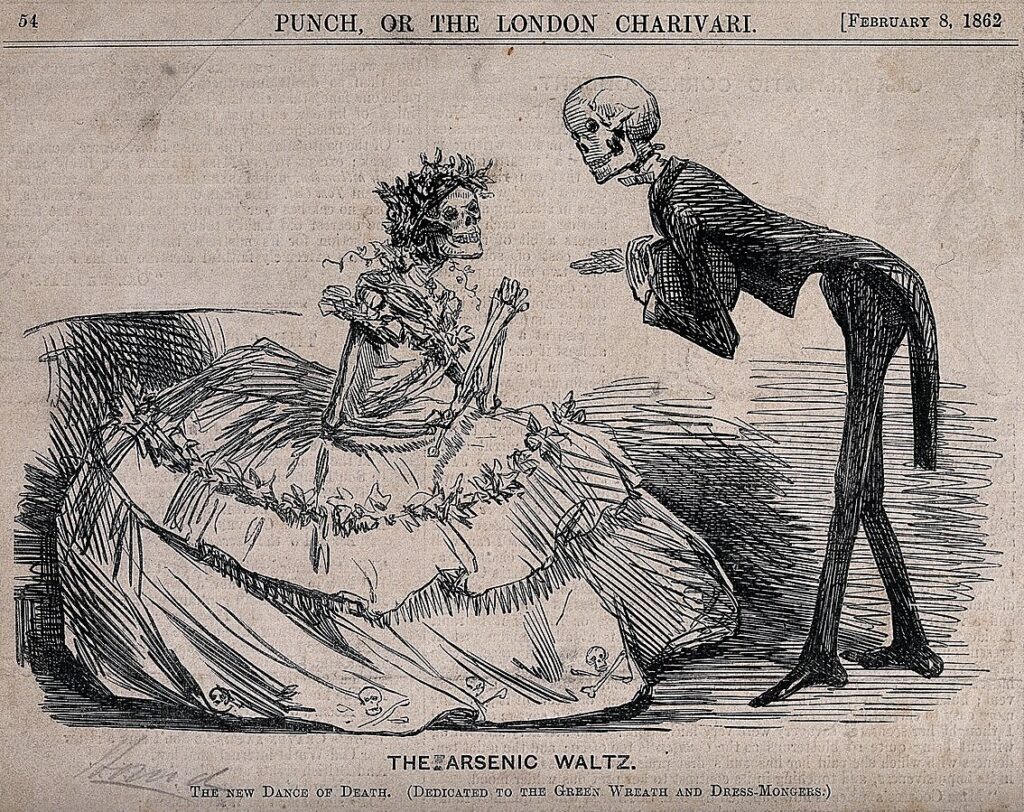Arsenic
Ah, the beautiful joy of color! The way bursts of reds, greens, yellows and blues can raise the spirits of the human soul. Whether it’s a bit of pop-colored paint in a wall mural, the tones of a classic work of art, or the tones of a statement fashion piece, it makes our whole world brighter. One shade of green, though, might make our time in that world a whole lot shorter.
For a long time, the problem with a lot of green paints and colors was that they weren’t lightfast, meaning they’d fade over time to a decidedly icky brown. Enter a man named Carl William Scheele in the year 1775, who invented a lightfast, bright green color he named after himself: Scheele’s Green. His special ingredient? Arsenic. Yes, that arsenic, of the “and Old Lace” variety. Even though people did know arsenic was toxic if ingested, they, in their ancient wisdom, figured making wallpaper, paint and all sorts of clothes using the color was fine. It wasn’t. The wallpaper, specifically, was often used in children’s bedrooms, where moisture would release the arsenic, killing many little kids in the process.
Freon

The last entry is recent enough that it probably doesn’t demand as much coverage for the modern mind: freon, one of the most common sources of chlorofluorocarbons, or CFCs, which decimated the ozone layer. A man named Thomas Midgley invented freon when he was looking for a nonflammable, nontoxic refrigerant. Freon fit the bill, as it wasn’t technically flammable or toxic, though it would ironically end up causing the whole world to become hotter and threaten the health of the entire population. The Montreal Protocol of 1987 thankfully curbed the use of CFCs, and the ozone layer has been healing ever since. Midgley’s invention, however, still did a world of hurt.
This wasn’t Midgley’s first invention, either. Turns out he was also the guy who came up with putting lead in gasoline. Are we sure he wasn’t just a vindictive time traveler?

